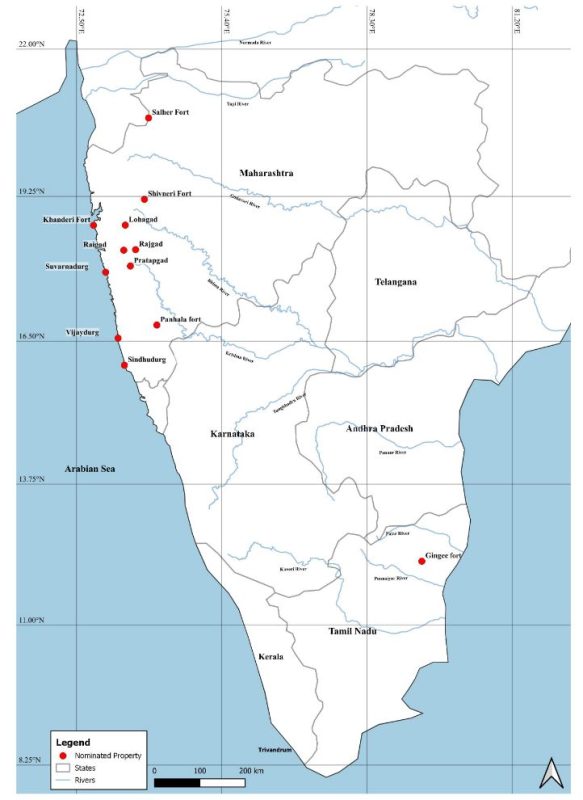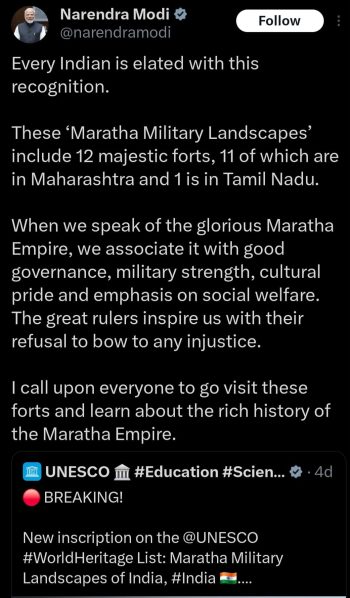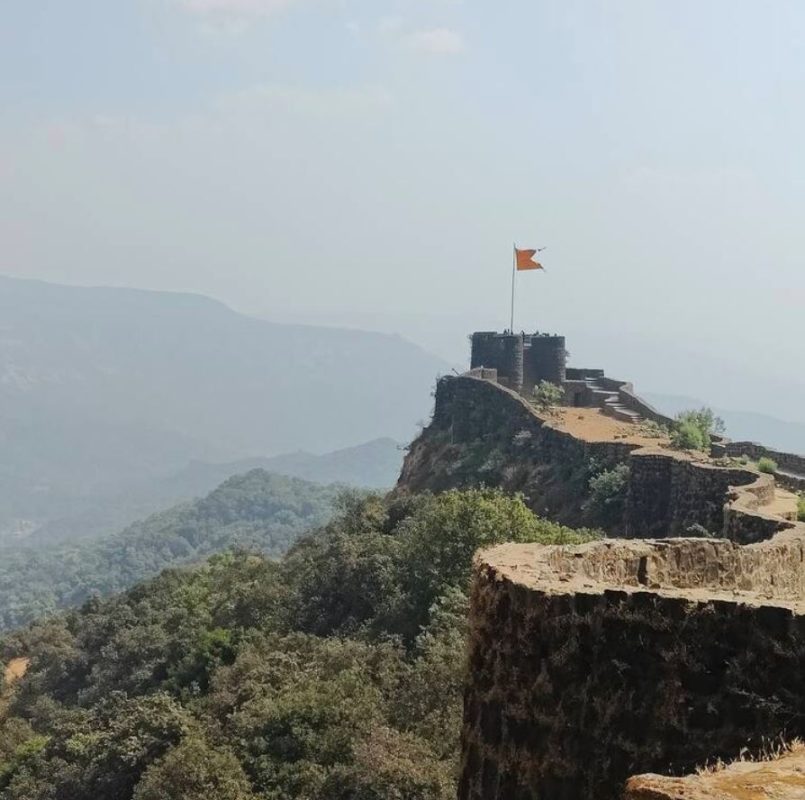16th July 2025 – UNESCO’s World Heritage Committee is right now convening its 47th session at its headquarters in Paris, France. During this convention, the committee has declared that 12 major fortifications built between the period of late 17th and early 19th centuries, built by Marathas, are now part of World Heritage Sites.
These 12 forts include:
- Salher Fort
- Shivneri Fort
- Lohagad
- Khanderi Fort
- Raigad
- Rajgad
- Pratapgad
- Suvarnadurg
- Panhala Fort
- Vijaydurg
- Sindhudurg
- Gingee Fort
Apart from one fort which is located in Tamil Nadu (Gingee Fort), the other 11 forts are situated in Maharashtra. These are located strategically on coastal and mountainous terrain where they formed a complex defence system supporting Maratha military dominance, trade protection and territorial control.

As per the Executive Summary submitted by the Government of India, “These 12 forts symbolize the manifestation of power and geopolitical dominance through strategic vision, geographical diversity, nuanced understanding of the terrain, innovative military design, defence planning, social inclusiveness, and deployment of military tactics devised under the Maratha Regime.”
It further noted that “Collectively, the 12 components of the Maratha Military Landscapes narrate a military saga and showcase the interconnectedness in expanding the Maratha Kingdom, and developing Maratha community ideologies, culture, and social structure of an important phase in the history of the Indian subcontinent. They also highlight the vision of the Maratha Rulers in defence architecture and planning strategies, leading to successful expansion through numerous sieges, conflicts, geopolitics, and alliances over a period of three centuries.”
“The inception of the Maratha Military ideology dates back to the late 17th century, reaching its zenith during the reign of the Maratha King Chhatrapati Shivaji Maharaj by the 1670CE and continuing through subsequent rules until the Peshwa rule till 1818 CE. This historical period, marked by expansion, rule, rise, and fall of the Maratha Kingdom, holds paramount importance in Indian history for its military ingenuity”, the executive summary further added.
After the news broke out, Indian Prime Minister Narendra Modi wrote on X, “Every Indian is elated with this recognition….When we speak of the glorious Maratha Empire, we associate it with good governance, military strength, cultural pride and emphasis on social welfare. The great rulers inspire us with their refusal to bow to any injustice.”

Pictures Credit – UNESCO Website and X.com

